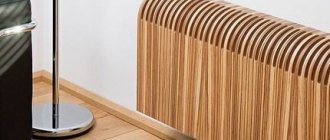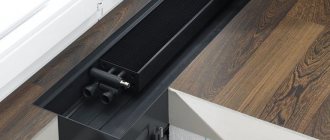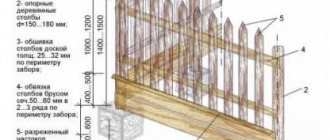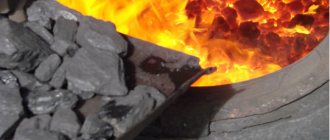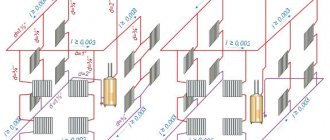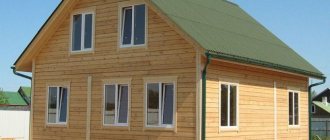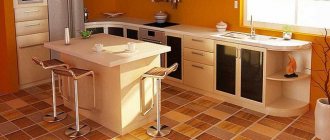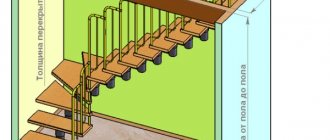An electric convector, like a life preserver, helps cope with low temperatures in our homes during the off-season. The management company has strict regulations for supplying heat to apartment buildings, but the weather has its own, uncoordinated schedule. Solving the problem of discomfort today is not difficult; you just need to go to the nearest store and buy a heater.
Let us make a reservation that the review will not contain an economic comparison of the option of completely replacing the traditional heating system of a house with heating the home using an electric convector. We consider polemics on this issue to be completely inappropriate. Today we are trying to figure out how profitable it is to buy an electric convector, solely in terms of its operation as an additional source of thermal radiation in our apartments.
Convectors for summer cottages
For the majority of owners of country houses, in which the use of expensive and bulky heating systems is not justified, convectors with a thermostat (https://www.noboinfo.ru/catalog/konvektory-elektricheskie-s-termoregulyatorom-dlya-dachi/) will be the most effective and reliable source of heat. These compact and economical units do not take up much space and consume little energy.
Russians have recently increasingly given preference to reliable and safe brands, such as NOBO. The catalog presents several series of convectors produced by the Norwegian company NOBO, using innovative technologies. They are equipped with reliable thermostats that automatically maintain the desired room temperature.
The main advantages of these heating systems are low electricity consumption and reasonable price, as well as:
Compact and practical;
- Long service life (30 years);
- Compliance with international standards;
- Norwegian production quality;
- Long warranty period (10 years).
Each convector model can be installed on a wall using the included mount, or on legs. You can calculate the required convector power for each room and select the optimal model using the “Convector selection” function, which is available on our website. If you have any questions, our consultants will help you choose a convector model for your dacha.
Since warm air is lighter than cold air due to its lower density, it tends to rise upward in a room. While the heavier layers of cold air begin to sink down and, in turn, also heat up. Using this principle, a convector can heat the air throughout the entire room without using additional air circulation systems.
Principle of operation
The Nobo electric convector operates based on air circulation through the device.
It has a heating element inside and a thermostat outside to control temperature conditions. Entering the convector, the air exits in the form of a directed heated flow, heating the room. This ensures fast and uniform heating of the air. Thanks to the use of a special alloy for the manufacture of the heating element, it begins to work for heating almost immediately after connection. The convector can be installed in different rooms and near any surfaces, since fire safety is guaranteed due to the low temperature of the housing. At the same time, with the small size of the heating element, the convector has sufficient power to heat any area.
Thus, this type of heater guarantees efficient operation, reliability, as well as cost-effectiveness and ease of operation.
How to choose?
- The main parameters that you will need to follow when buying a convector are the following.
- Convenience and safety of use, efficiency, long-term operation, useful additional functions, and, of course, price. All of them will be determined by the design of the heating device.
- First you need to decide which convector you will need. They are usually placed on walls or under windows.
- If you want the convector to be mobile, then you will need to purchase a special floor-standing model with special legs.
The language of numbers
The most expensive budget items when installing heating are the purchase of equipment and installer services. The minimum you can expect when installing an electric boiler on a house with an area of 120 square meters. m. - approximately 220 thousand rubles.
The cost of inverter heating for a house with the same area, which means 7–9 inverter convectors, will be 70–80 thousand rubles. To this amount will be added minor costs for cables and sockets.
Convector control via the Hommyn mobile application
Tip-over indicator
It is important to note that when buying a wall-mounted convector, you should take into account that such models do not have tip-over indicators, which specifically turns off the power supply in this case. So it is better, if you are going to use a floor-standing model, to purchase convectors specially designed for this.
Minimal energy losses
The main thing that distinguishes an inverter heating system from electric boilers is its intelligent control, which does not waste electricity. This was proven by a number of experiments conducted by specialists from the Moscow Energy Institute.
The tests were carried out in a special thermally insulated chamber of the institute, which reproduces the heat loss of the room. The chamber consistently compared the operation of two heating systems: an inverter heating system and a system based on an electric boiler. Tests have shown that, under equal conditions, to maintain the set temperature, the inverter system used 40% less electricity than an electric boiler.
A graph comparing energy costs when maintaining a temperature of 25°C for two heating systems based on research from the Moscow Energy Institute
Inspection before purchase
- It is imperative to inspect the device before purchasing. Damage to the heater cover is unacceptable, and the corners and seams must be smooth and neat.
- Low-quality convectors almost always have flaws in their appearance.
- The higher the convector, the faster it will heat the surrounding air, this should be taken into account.
- Convectors with a body length of 40 cm and above are considered tall.
- Convectors up to 20 cm high, which are usually placed on baseboards, have a low flow rate, so they are produced up to two and a half meters long.
- If you are going to install the convector in a damp room, then you must choose a model with splash protection.
Top 4. REDMOND SkyHeat 4560S
Rating (2021): 4.70
Best for a summer residence When the Antifrost mode is activated, the convector turns on the heating as soon as the temperature in the room drops to 7°C. This model is the best solution for a summer residence.
- Characteristics
Average price, rub.: 8257
- Country: China
- Heating area, m²: 15
- Power, W: 1500
- Installation: floor
- Ecosystem: Yandex Smart Home
- Dimensions: 55.5*43.5*23.5
A floor convector with a power of 1.5 kW quickly heats a 15-meter room within 10-35 degrees Celsius. The temperature can be adjusted remotely in 1°C steps. From your smartphone you can also turn the device on and off and check the air temperature in the room. Settings options are available in the Ready for Sky app, but to use the full functionality of the device you will need to install R4S Gateway on your home Android smartphone or tablet. Both of these applications cannot be installed on the same device. In addition, the heater can be controlled using voice assistants, Alice or Marusya, as well as a panel on the convector body. The device is perfect for giving in the cold season. When the air in the house reaches 7 degrees, the device turns on and starts heating - you just need to activate the Antifrost mode. Among the shortcomings, users note the lack of ability to work via Wi-Fi.
Advantages and disadvantages
- Fast heating
- Antifrost mode
- Works with Marusya and Alisa
- Convenient application
- No Wi-Fi
The best with natural convection
Comparison table (Natural convection)
| Manufacturer | Model | Width | Depth | Length | Heat dissipation (70C) | Price | Price per 1 W |
| TOP 1 Itermic | Itermic ITT 250.90.2000 | 250 | 90 | 2000 | 880 W | 22 431 | 25.40 |
| TOP 2 Gekon | Gekon Eco 230.80.2000 | 230 | 80 | 2000 | 750 W | 27 009 | 36.01 |
| TOP 3 Heatmann | Heatmann LINE 250.90.2000 | 250 | 90 | 2000 | 741 W | 44 901 | 60.59 |
| TOP 4 Kermi | Kermi KVN 230.80.2000 | 230 | 80 | 2000 | 722 W | 26 490 | 36.68 |
| TOP 5 Varmann | Varmann Ntherm 230.90.2000 | 230 | 90 | 2000 | 718 W | 36 553 | 50.90 |
Correct selection of in-floor heater parameters
Width selection
This parameter must be selected in such a way that no installation issues arise in the future. It is especially necessary to pay attention to the sufficiency of the distance from the panoramic windows - it should be from 5 to 15 cm. The same applies to the underground niche - the heater should not be installed end-to-end, the free distance should be 5 - 10 mm.
Regarding the selection of width, in most cases the features of the panoramic window and the general design solution used in the room will play a role. Typically, heaters are limited in their length, but by increasing their width it is possible to increase their power.
Depth selection
Here it is necessary to take into account the height of the screed and the structural features of the underground niche itself. The device must be installed freely, having a reserve depth of 10-20 mm for reliable fastening and free entry of fasteners.
Length selection
As a rule, the radiator is chosen so that it covers the entire length of the panoramic windows or the room in general. Here you should not forget about the distances from the walls, which should be at least 15-30 cm.
Selection of decorative lattice
These grilles add an element of aesthetics and decoration to the overall design of the heater. Most often, they are purchased separately from the main set, but expensive and well-known brands may include them immediately in the set. The main thing is to maintain harmony with the surrounding design, that is, to achieve a harmonious combination of slats, colors, materials used, and the environment. Still, specialist designers advise purchasing grilles manufactured by the same brand that manufactured the convector itself (in order to ensure full compatibility of all parts).
Instead of an epilogue
The process of purchasing an in-floor convector is quite complicated, because many nuances must be taken into account. The main mistake of the buyer may be his pursuit of cheapness. In budget samples, material is often used extremely sparingly. For example, for water heaters the thickness of the walls of the conductive pipe is specially reduced and a relatively small number of fins are installed. All this will affect the quality of heat transfer, since fins installed with a large pitch will release air into the room a few tenths of a degree cooler. The same will apply to the strength of the case itself - the thinner it is, the less the entire system as a whole works. Cheap models are also famous for their extremely noisy fans, which sometimes even the highest quality rubber plugs are unable to silence.
To summarize, we can conclude that when choosing a floor convector, you should not choose a cheap price at the expense of quality. At the same time, it should be noted that if you order a convector on an online platform directly from the manufacturer, you can significantly save on retail overpayments. As an analysis of foreign websites of manufacturers of these devices shows, the cost of delivery is usually already included in the total price, and the delivery destination can be almost anywhere in the world.
Dependence of price on heater characteristics
The cost of the convector will consist of its following characteristics:
- The pressure used and the heating temperature given;
- Total thermal power;
- Fan noise;
- Their number in the design;
- Average energy consumption;
- Availability of size chart;
- Features of decoration.
Selecting a heater with specific characteristics and so that they correspond to price/quality indicators is not so difficult today - fortunately, most convector models are sold according to the so-called “designer” scheme (the entire device is equipped with the corresponding elements separately).
Regarding prices, we can talk about the rather high cost of the equipment in question in general. For example, even for a brand released in the vast countries of the former USSR, you will have to pay about 16,000 rubles for a sample with a power of 1000 W. In the former republics, production is mainly focused on models for heating a total area of up to 25 meters with a total price of 50,000 rubles.
Tips for use
Proper operation will extend the life of the convector and make its operation as safe as possible. In general, convection equipment does not require special conditions, but basic rules should still be followed.
- Periodically, dust must be removed from the body of the device when it is turned off.
- When installing, make sure that the lower part of the convector rises above the floor by at least 15 cm, and is 25 cm from the wall.
- Do not cover the convector with any objects on top, hang laundry or place it in a niche that is too low. There should be a distance of about half a meter at the top, otherwise the convector will overheat. This will lead to damage (unless the device is equipped with a special overheating sensor).
- If there are children in the house, try to choose a stationary type convector model without wheels.
The following video provides a detailed overview of trench convectors.
